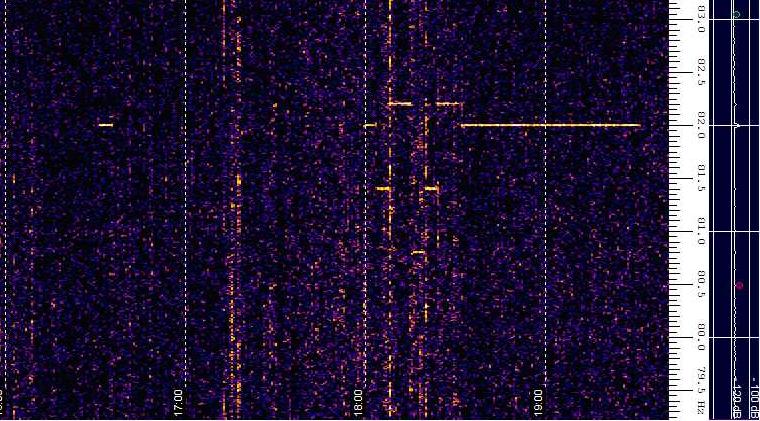Hi all - Thanks to Eddie G3ZJO for his help and encouragement I was
able to set up SL to get good copy of today's teatime ZEVS
transmission from 1700 to 1830 UTC. Using Eddie's data units this
message is 7,4,8,8,1,4,8,8,7 - a repeated 4,8,8 group with 7 as a
start/stop marker and 1 indicating the midway - this has been the
pattern for the last few transmissions at breakfast 0800-0930UTC and
teatime 1700-1830UTC each day. If there are only 12 tones and two
are used as stop/start and midway markers then, in this simple
format, this leaves 10 tones or symbols for information - amounting
to just over 3.3 bits/symbol. However, who knows how the data is
encoded?!
This trace also shows a carrier burst of a few minutes about 90
minutes before the transmission.
I've attached the SL .usr file I was using - which is a huge
improvement on the settings I was using yesterday.
73 Chris G3WCD

On 09/05/2011 21:26, wolf_dl4yhf wrote:
Hi
Eddie,
You wrote:
Did you ever put numbers to the data
units?
080905.jpg is familiar to us as a breakfast or tea time 3 unit
code, reading 6,11,12
0080906jpg is more complex 3,8,6 - 6,8 ---- 9,11,10 - 12,4
This has confirmed some as yet unused (unseen by me) data units
which I had surmised were there and useable.
I didn't try to 'see' anything there, I am not even sure how many
different 'tones' they actually send. But it doesn't seem that
much, only a few bits per symbol.
The filenames use the date in ISO 8601 format, which I often use
for temporary filenames.. YYMMDD . With a full year number, the
dates were 2008-09-05 and 2008-09-06. Not sure if the timescale
was in UTC or local time back then (but compare this with Markus'
post, the schedule seems to be the same still). I don't remember
what happened on September 6, 2008, why they sent so many 'data
bits' around and after noon. It's a pity my recording ends before
the transmitter switched back to the 82 Hz idle tone on that day.
73,
Wolf .
|
 ZEVS 82Hz.USR
ZEVS 82Hz.USR
Description: Text document
|

